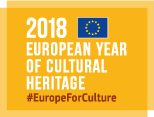NANORESTORE - Advanced solutions for the conservation of cultural heritage

Challenge: WHY the innovation has been developed? What problem is addressed and why has not been not solved before?
Modern and contemporary art exhibit a complex composition that is radically different from that of classic works of art. Contemporary artists have experimented and used a large variety of materials coming from industrial production. As a result, modern artworks are often affected by fast degradation processes which pose a serious threat to the preservation of global heritage in the next years, requesting innovative methodologies not achievable with conventional technologies.
Solution: WHAT the solution is about? HOW it goes beyond the state of the art?
The NANORESTORE and NANOFORART projects have developed radically new nanomaterials for the conservation of modern and contemporary art, trade name NANORESTORE.
End-users and examples of uses: WHO will beneficiate/ is beneficiating from the solution? WHERE and HOW the solution has been adopted? How will impact people or end-users? Add as more as possible examples of market and society uptakes
Important restoration workshop have already tested NANORESTORE products on prestigious artworks such as on Pollock, De Chirico and Picasso paintings (Peggy Guggenheim collection) and Roy Lichtenstein and Eva Hess artworks (Tate Modern). Products developed within the NANORESTART and the NANOFORART projects have being distributed to end-users in several European and non-European countries, with 500 institutions being usual customers of the new products. The new solutions are more affordable than the traditional methods, in terms of cost and complexity of operation to the conservators. Four trademarks have been already registered by CSGI - a spin-off of the NANOFORART and NANORESTART projects - and are already available to conservators. 24 products are already distributed by CSGI (http://www.csgi.unifi.it/products/products.html); several organogels for cleaning will be added soon.
Future possibilities: Future market perspectives when the innovation will be fully available or in use
Cultural heritage is a strategic resource for a sustainable Europe. If properly managed, it can enhance social inclusion and cohesion, encourage intercultural dialogue, improve the quality of the immediate living environment, and stimulate tourism. Effective strategies to ensure the long-term conservation of irreplaceable cultural heritage resources are therefore necessary. Thousands of museums and historical organizations across the world maintain important collections of artefacts representing a gigantic cultural diversity. The challenge of preserving and making accessible such heritage is enormous and the need for knowledgeable staff is significant and on-going. Moreover, the European CH is of exceptional economic importance for the tourism industry, generating an estimated European annual revenue of €335 billion (2014), and about 10 million jobs. The market for conservation is estimated at ca. €5 billion per year and could increase by a significant factor in next years due to the wider use of nanomaterials. The art market directly supports some 2.8 million jobs.
References for more information (eg. website, social media)
Contacts:
Piero Baglioni (products@csgi.unifi.it)
Application sectors:
- Restoration and conservation of CH
Objectives:
- Market/business development
- Supporting strategies, regulatory frameworks legislation and standards at EU and national levels
- Other
RRI Dimensions:
- Public Engagement
- Science Education
Communities:
- Advanced future technologies for heritage and arts

